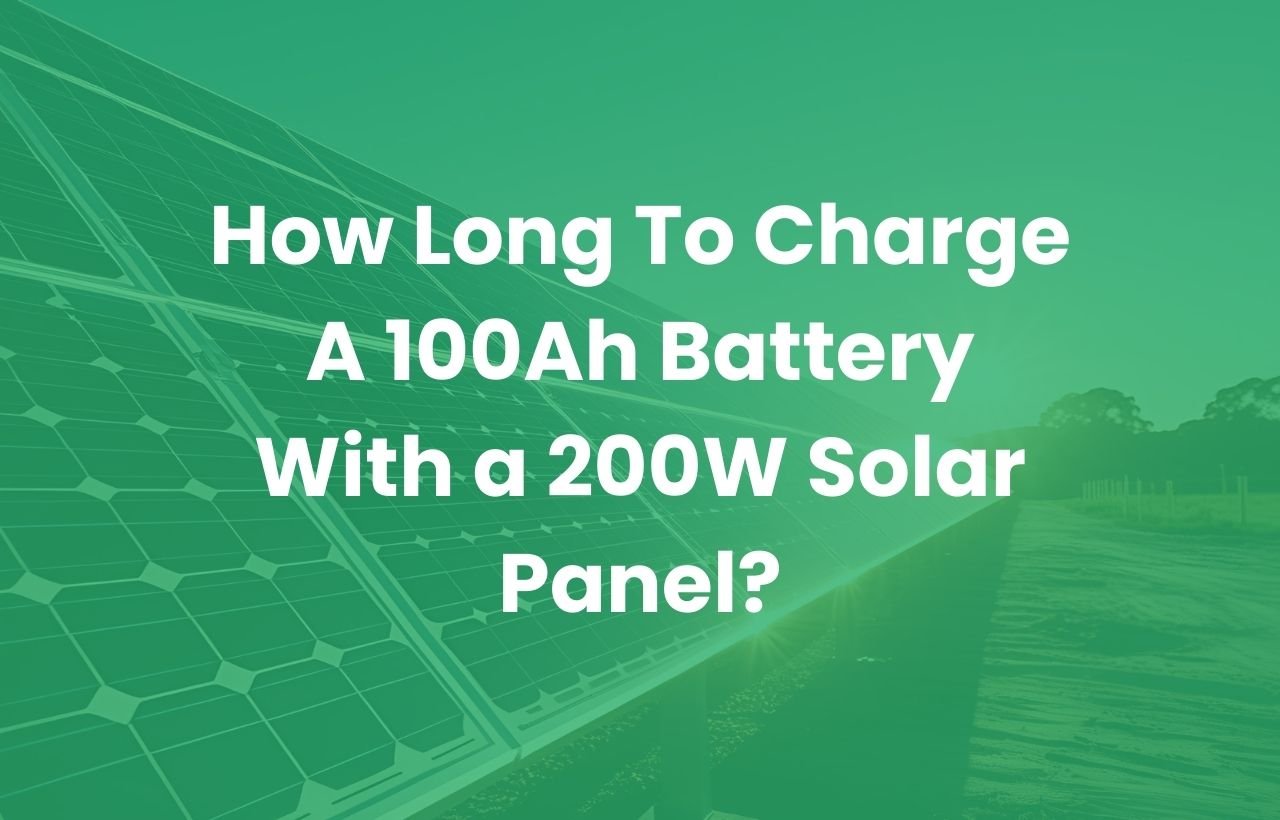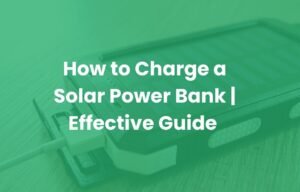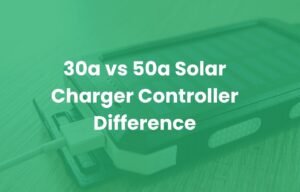You recently purchased a 200W solar panel and a 100Ah battery with the hope of having limitless, free energy. You expect it to be fully charged by dinnertime when you plug it in. However, your battery meter has hardly moved as the sun sets.
You look for solutions in frustration and come across the simple formula that guarantees a 6-hour charge. Why, then, is your reality so different? In fact, simple math doesn’t exist on your rooftop; it exists in a perfect lab.
In this article, we will provide a clear explanation of the complex question of how long it takes to charge a 100Ah battery using a 200W solar panel and also break down specific factors that influence charging speed and show you how to figure it out for your particular system.
By the end, you will have a thorough understanding of your system and know how to optimize it.
Table of Contents
ToggleWhy the “Textbook” 6-Hour Calculation is Wrong
This formula may be familiar to you:
Ideal Hours = Battery Amp Hours (Ah) × Battery Voltage (V) ÷ Panel Wattage (W)
Putting the values:
100Ah × 12V ÷ 200W = 1200Wh ÷ 200W = 6 hours
This equation is based on:
- For six hours in a row, your panel produces a steady 200W.
- Your battery, controller, and cables all have zero energy losses.
- Throughout the day, the sun is directly overhead at its strongest.
- At this rate, your battery can be fully charged from 0% to 100%.
None of these is true in practice. Although this formula is a good starting point for understanding energy value, it is a poor measure of how long a charge will last.
How long to charge a 100Ah battery with a 200W solar panel? The Real Answer
Let’s skip ahead to the main topic. Although a straightforward calculation might suggest 5–6 hours, a 200W panel can fully charge a 12V 100Ah battery from a 50% discharge in approximately 1–2 full days.
This realistic schedule accounts for real-world elements such as battery chemistry, system energy losses, and poor sunlight.
We’re here to clarify the most common misconception among new solar users, which is the simplified 6-hour response.
The Three Crucial Elements That Affect Your Real Charging Time
1. Peak Sun Hours: The Most Important Factor
“Peak sun hours” does not refer to the sequence of hours from sunrise to sunset. It is the duration of the day during which the average sun intensity is 1000 watts per square meter.
- Arizona may experience 6.5 peak hours of sunlight in the summer.
- Germany may only experience 1.5 peak hours of sunlight in the winter.
- Average location: Usually calculated throughout the four to five hours of the sun.
The result shown is directly related to the output of your panel. Only during these peak hours will a 200W panel generate its rated power.
2. Efficiency of the System and Energy Loss
Your battery never receives 200 watts from your panel. Along the way, power is lost:
- Charge Controller: The largest loss is the charge controller. A more advanced MPPT controller can reach 95–98% efficiency, whereas a PWM controller is only 75–80% efficient. Your charging time may increase by hours or even days as a result of this decision.
- Battery Chemistry: The charge-accepting efficiency of lead-acid batteries is only roughly 75–85%. With an efficiency of 95–99%, lithium (LiFePO4) batteries are significantly superior.
- Additional Losses: Heat, dirt on the panels, and wiring resistance can all easily contribute to an additional 5–10% loss.
For an average structure, a realistic overall system efficiency factor is 0.8, or 80%.
3. The Depth of Discharge of Your Battery (DoD)
Note that a lead-acid battery should rarely be charged from 0%. If you empty it all, it will get damaged. Because of this, it is generally recommended that lead-acid batteries be discharged according to the 50% Depth of Discharge (DoD) guideline.
If you are already using this guideline, then this is great. It means that you simply need to replace 50Ah of electricity rather than the entire 100Ah.
Therefore, your actual charging time is roughly half of what a full recharge would take from the start.
A Complete Real-World Analysis
Let’s apply all of these factors to determine how long it would take to charge a 100 Ah battery using a 200 Watt solar panel in a practical setting.
The situation:
- 12V 100Ah LiFePO4 battery (at 50% depth of discharge)
- 200W solar panel
- It receives four hours of the sun’s rays.
- Controller: 95% efficient MPPT
- Other Losses: We’ll account for heat and wiring at 5%
The Accurate Formula:
Battery Volts × Amp Hours × Depth of Discharge ÷ (Panel Watts × Peak Sun Hours × Total Efficiency) is the precise formula.
Step 1: Calculate Required Energy (Wh)
12V × 100Ah × 0.50 (50% DoD) = 600 Watt-hours
Step 2: Find Solar Output of the Day (Wh)
Find the Total Efficiency First
0.95 (MPPT) × 0.95 (LiFePO4) × 0.95 (other losses) ≈ 0.86 (86%)
200W × 4 sun hours × 0.86 = 688 Watt-hours
Step 3: Time Calculation
600 Wh ÷ 688 Wh = 0.87 days
In conclusion, it would take less than a full day of sunshine to charge from 50% to 100% under perfect circumstances.
Our first response was confirmed when we found that the time might easily quadruple to 1.5 to 2 days for a lead-acid battery with a PWM controller (less efficient).
Can a 100Ah battery be charged using a 200W solar panel?
After understanding how long it takes to charge a 100 Ah battery with a 200 Watt solar panel, this is the logical next question.
Yes, for trickle charging and maintenance. It’s great for gradual, consistent charging, adjusting for tiny loads (such as a light or fan), and keeping a battery charged.
No, not for high energy consumption or rapid charging. A 200W panel is undersized if you frequently deplete your battery to 50% and need it back to 100% right away. A larger solar array (300W to 400W) would be required for quicker results.
How to Cut Down on Charging Time: 4 Useful Tricks
- The best thing you can do to boost efficiency and accelerate charging is to convert to an MPPT Controller.
- Tilt your panel seasonally by orienting it toward the sun all day long to maximise exposure during peak hours.
- Maintain the cleanliness of your panels because dust or pollen can drastically lower performance.
- Select a lithium (LiFePO4) battery when it’s time to replace yours because it’s more effective and cuts down on charging time by half.
Conclusion:
So, how long to charge a 100Ah battery with a 200W solar panel? The solution is never a single number, as we showed. This range, which is often between one and two days, is totally dependent on your surroundings, your equipment, and the condition of your battery.
Use our provided real-world calculation instead of the oversimplified 6-hour approach. You may set reasonable expectations, correctly size your system, and ultimately efficiently capture the sun’s power by being aware of the important variables of sun hours, efficiency, and depth of discharge.





